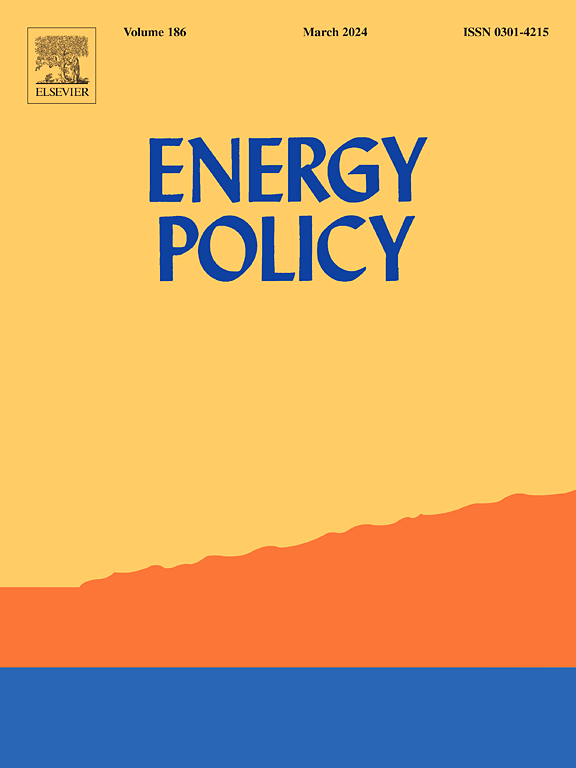Public perception and VSC-HVDC power transmission adoption: Experiences and lessons learned from past cases
IF 9.3
2区 经济学
Q1 ECONOMICS
引用次数: 0
Abstract
Voltage source converter high voltage direct current (VSC-HVDC) technology is viewed as a transformative solution for power transmission, particularly connecting remote renewable energy sources to urban areas. However, public opposition has historically challenged the adoption of power transmission projects. This study employs Boudet's technology-people-place-process framework to examine the public perception of two projects: Ten West Link (United States) and SuedOstLink (Germany). Through extensive document analysis and insights from selected technical experts, the research reveals the importance of early stakeholder involvement and comprehensive information sharing about projects' impact. The study then applies these findings to highlight how experiences from previous projects can guide future implementation in addressing public perception challenges. A reflection on South Korea's planned West Sea (Yellow Sea) HVDC project demonstrates the framework's applicability to future initiatives aimed at boosting renewable energy penetration. Key findings emphasize that successful VSC-HVDC project implementation depends on ensuring technology stability, fostering extensive stakeholder participation, engaging in early and transparent public communication, and responding effectively to community needs. The research concludes that future projects should prioritize stakeholder involvement to address public concerns and ensure community participation in decision-making, thereby facilitating the effective adoption of VSC-HVDC technology to develop sustainable energy infrastructure.
公众认知与VSC-HVDC输电采用:过往案例的经验与教训
电压源转换器高压直流(VSC-HVDC)技术被视为电力传输的变革性解决方案,特别是将偏远的可再生能源连接到城市地区。然而,公众的反对历来挑战着输电项目的采用。本研究采用Boudet的技术-人-地点-过程框架来考察公众对两个项目的看法:Ten West Link(美国)和SuedOstLink(德国)。通过广泛的文件分析和来自选定技术专家的见解,该研究揭示了早期利益相关者参与和关于项目影响的全面信息共享的重要性。然后,该研究将这些发现应用于强调以往项目的经验如何指导未来实施,以解决公众认知挑战。对韩国计划中的西海(黄海)高压直流输电项目的反思表明,该框架适用于旨在促进可再生能源渗透的未来倡议。主要研究结果强调,vcs - hvdc项目的成功实施取决于确保技术稳定性、促进利益相关者的广泛参与、尽早开展透明的公众沟通以及有效响应社区需求。研究得出的结论是,未来的项目应优先考虑利益相关者的参与,以解决公众关注的问题,并确保社区参与决策,从而促进有效采用vcs - hvdc技术来发展可持续的能源基础设施。
本文章由计算机程序翻译,如有差异,请以英文原文为准。
求助全文
约1分钟内获得全文
求助全文
来源期刊

Energy Policy
管理科学-环境科学
CiteScore
17.30
自引率
5.60%
发文量
540
审稿时长
7.9 months
期刊介绍:
Energy policy is the manner in which a given entity (often governmental) has decided to address issues of energy development including energy conversion, distribution and use as well as reduction of greenhouse gas emissions in order to contribute to climate change mitigation. The attributes of energy policy may include legislation, international treaties, incentives to investment, guidelines for energy conservation, taxation and other public policy techniques.
Energy policy is closely related to climate change policy because totalled worldwide the energy sector emits more greenhouse gas than other sectors.
 求助内容:
求助内容: 应助结果提醒方式:
应助结果提醒方式:


